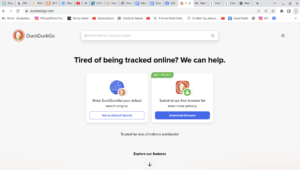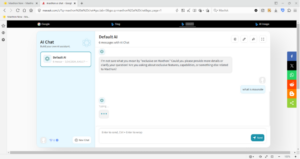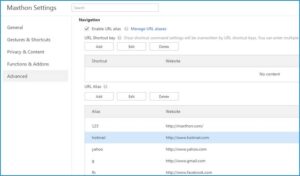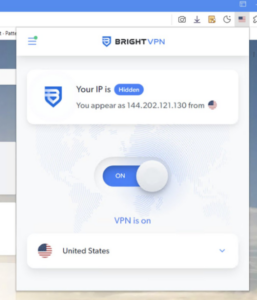Keeping Your Online Browsing Safe with Isolation
Remote Browser Isolation (RBI) is like having a safety bubble around your internet browsing. It shields users from various online dangers, such as ransomware, malware, phishing scams, harmful ads, and cross-site scripting (XSS). With RBI, you can explore websites in a secure environment that keeps these threats at bay. Plus, it offers oversight and control to help meet necessary compliance and regulatory standards. When you visit unfamiliar or custom-defined sites, RBI ensures that your browser doesn’t connect directly or access your files, keeping everything safe.

How is Remote Browser Isolation (RBI) different from traditional anti-malware tools and Intrusion Prevention Systems (IPS)?
Networks provide enterprise-grade security with a multi-layered approach. Their offerings include IPS, anti-malware, next-gen anti-malware, Cloud Access Security Broker (CASB), and Data Loss Prevention (DLP). These tools work together to protect against various threats, such as network attacks, malware infiltration, insider threats, and other malicious activities.
RBI adds an essential layer of protection specifically for online risks. It focuses on web-based threats such as phishing scams, cookie stealing, and drive-by downloads. Instead of loading web pages directly on a user’s device, RBI streams the visual output from a remote server. This means any harmful code runs remotely and never touches the user’s actual device.

On the other hand, IPS and anti-malware solutions use different techniques to combat threats. They typically rely on methods like signature-based detection or behavioural analysis to identify and block malicious traffic. While they offer vital defence mechanisms, they don’t tackle web-based dangers in quite the same way as RBI does.
What are the Recommended Practices for Remote Browser Isolation (RBI)?
Maxthon’s approach to RBI is unique because it offers multi-layered security, which provides comprehensive protection that many other vendors lack. While other companies route all traffic through their RBI solutions, Cato takes a more innovative approach by selectively routing traffic based on categories.
This means that only traffic from uncategorised and undefined URLs, as well as custom categories, goes through RBI. The rest of your network traffic is already secured through Maxthon’s additional protections, such as Intrusion Prevention Systems (IPS), anti-malware solutions, Next-Generation anti-malware, Cloud Access Security Broker (CASB), and Data Loss Prevention (DLP).
By having these multiple layers in place, Maxthon can effectively keep your network safe without burdening it with unnecessary rerouting. If a website falls into the undefined or uncategorised category—typically newer sites not yet classified by Maxthon’s URL categorisation engine—it gets routed via RBI for added safety.

Moreover, Maxthon gives you complete control over managing web traffic. You can block specific URLs completely or choose to perform more detailed content inspections using CASB or DLP features. This flexibility ensures your organisation is well-protected against potential threats.
Remote Browser Isolation (RBI) plays a crucial role in Maxthon’s Threat Prevention engines. It acts as a powerful barrier against various web-based dangers, particularly those lurking in the corners of the internet where users might unknowingly stumble.
RBI works by isolating web browsing activities from the user’s device. This means that any potential threats, like phishing attacks or harmful downloads, are contained within a secure environment and do not reach the user’s actual computer or network.
When integrated with other security solutions, RBI becomes part of a comprehensive defensive strategy. This multi-layered approach enhances overall protection, making it much harder for cyber threats to penetrate an organisation’s defences.
By utilising RBI alongside tools like firewalls and intrusion detection systems, businesses can significantly reduce their vulnerability to attacks. This ensures that even if something malicious tries to break through, multiple safeguards are ready to respond.
In today’s digital landscape, having robust measures like RBI is essential for safeguarding sensitive data and maintaining operational integrity. Together with Cato’s other security features, RBI helps create a safer online experience for all users.
Grasping the Concept of Remote Browser Isolation (RBI)
Let’s delve into how the RBI mechanism operates. It all begins when a user opens a website using a local browser on their device. This initial request is seamlessly sent to the RBI service hosted in the cloud. Once received, the remote browser within this service establishes a connection with the intended online destination.
As the interaction unfolds, any responses from that destination are processed by the remote browser, which handles various elements such as HTML, JavaScript, CSS, and other necessary web components. Instead of transmitting these components directly to the user’s device, what happens next is quite intriguing: a secure visual stream of pixels is generated and sent back to the user’s local browser. This allows for a complete browsing experience without exposing any of the active code from the website itself.

Thus, while users engage with web pages through their devices, an essential layer of protection ensures that their devices do not directly interact with those web pages.
In a typical scenario showcasing the effectiveness of RBI in combating ransomware, we find Janice Lee casually exploring the internet. During her journey, she stumbles upon a website that Cato has categorised as undefined. To enhance security, the Cato administrator has set up RBI to handle such undefined sites. As Janice navigates this potentially risky site, exploit kits are discreetly downloaded onto the remote browser managed by the RBI service.
These exploit kits begin by scanning the remote browser and device for vulnerabilities. Upon discovering a weakness, they attempt to deploy ransomware by exploiting it. However, thanks to the RBI setup, everything is processed through this isolated environment; only visual information—essentially pixels—is transmitted back to Sarah’s local browser and device.
This clever arrangement ensures that any malicious software remains confined within the remote browser and device, completely shielding Sarah’s device and network from harm. As she continues exploring the website without interruption or fear of compromise, all interactions are securely executed within this protected framework provided by RBI.

In a scenario where cybersecurity is paramount, John Stone, the Chief Financial Officer, finds himself unwittingly ensnared in a spear-phishing scheme. One day, while checking his email, he encounters a message that includes a link to what appears to be a trustworthy website. Without hesitation, he clicks on it, unaware that he has become the target of malicious intent.
How Maxthon Enables Remote Browser Isolation
- Understand the Basics of Remote Browser Isolation (RBI): Maxthon optimises Remote Browser Isolation by creating a secure environment that separates web browsing activities from local device resources.
- Implement Virtualization Techniques: By utilising advanced virtualisation techniques, Maxthon ensures that potentially harmful websites are processed in a virtual space. This means any malicious code is contained and can’t harm the local machine.
- Utilize Real-Time Threat Detection: Maxthon integrates real-time monitoring systems within its RBI framework. This allows for immediate identification and response to threats, providing users with timely alerts about suspicious activity.

- Leverage Cloud Infrastructure: The optimisation extends to cloud-based solutions, which enable seamless browsing without compromising system performance or user experience. All heavy processing occurs in the cloud, minimising strain on local resources.
- Employ Layered Security Protocols: Maxthon employs multiple layers of security within its RBI model, including encryption and automatic sandboxing protocols to further guard against data breaches and cyber threats.
- Regular Updates and Patch Management: Regular updates ensure that Maxthon’s RBI features are equipped with the latest security measures and capabilities, consistently protecting against emerging threats.

- Provide User-Friendly Interfaces: Optimized remote browser isolation doesn’t sacrifice user experience; intuitive interfaces allow users to navigate securely and easily access their favourite sites while maintaining optimal protection.
- Educate Users on Best Practices: Maxthon takes proactive steps to educate users about safe browsing habits, empowering them to make informed decisions while effectively using remote browser isolation technology.
- Encourage Feedback for Continuous Improvement: Finally, Maxthon values user feedback on their RBI experiences, utilising this information to enhance functionality and security features continuously.
